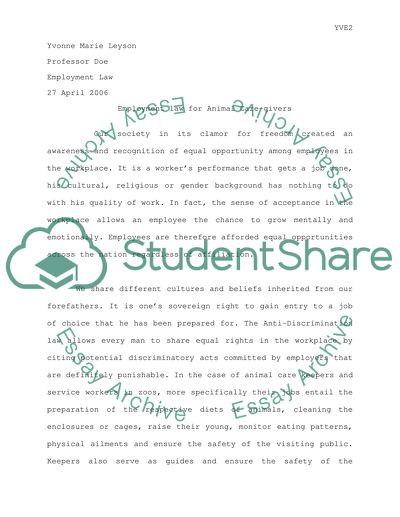Cite this document
(“Employment Law for Animal Care Essay Example | Topics and Well Written Essays - 4750 words”, n.d.)
Employment Law for Animal Care Essay Example | Topics and Well Written Essays - 4750 words. Retrieved from https://studentshare.org/education/1520993-employment-law-for-animal-care
Employment Law for Animal Care Essay Example | Topics and Well Written Essays - 4750 words. Retrieved from https://studentshare.org/education/1520993-employment-law-for-animal-care
(Employment Law for Animal Care Essay Example | Topics and Well Written Essays - 4750 Words)
Employment Law for Animal Care Essay Example | Topics and Well Written Essays - 4750 Words. https://studentshare.org/education/1520993-employment-law-for-animal-care.
Employment Law for Animal Care Essay Example | Topics and Well Written Essays - 4750 Words. https://studentshare.org/education/1520993-employment-law-for-animal-care.
“Employment Law for Animal Care Essay Example | Topics and Well Written Essays - 4750 Words”, n.d. https://studentshare.org/education/1520993-employment-law-for-animal-care.


